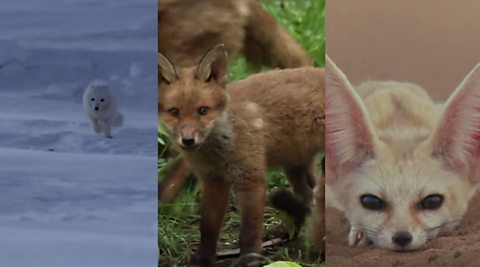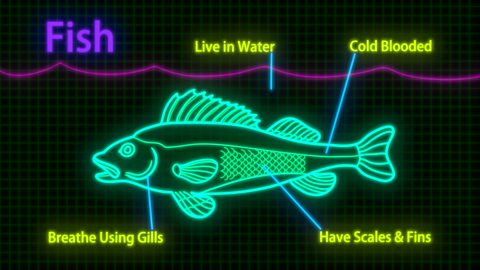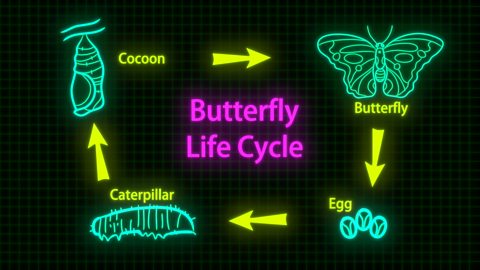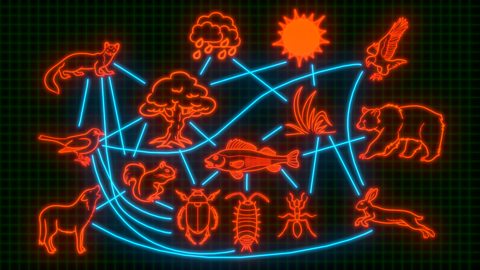Video summary
The energy that all animals get from food begins with the Sun's energy and once it reaches Earth is transferred through food webs and food chains.
In turn each part of the food chain is described starting with the producers, then the primary and secondary consumers, predator and prey.
The frog fish is used as an unusual example of a top predator followed by a graphical representation of a food chain (tree, caterpillar, bird, bird of prey).
Food chains can be disrupted by outside influences such as pesticides and herbicides and for the peregrine falcon this resulted in weak and damaged eggs.
Populations within a food chain can change and the removal of part of the food chain can have a dramatic effect, as with deer in Britain.
Not all animals eat one type of food and lots of food chains join up, which is demonstrated through graphics showing a food web and how this links to an ecosystem.
But how does the story end and what happens to the energy and minerals in the top predator? This is where the decomposers come in!
This clip is from the series Natural world of plants and wildlife.
Teacher Notes
Prior to watching the clip, pupils could be asked where they think food comes from, and why we eat food.
The clip could be paused after the question ÔÇśCould you guess where that could be?ÔÇÖ to prompt discussion before continuing.
Pupils could be given pictures of various organisms and asked to put in order of what eats what.
After the clip the distinction between feeding and energy transfer could be introduced and pupils could be given additional labels such as consumer to try and label their original food chain.
Pupils could then be asked if they can think of examples of food chains based on what they know already.
After the question ÔÇśWhat do you think would happen if one plant or animal were removed from a food chain?ÔÇÖ
The teacher could pause to let the pupils think about and answer the question before continuing.
This clip will be relevant for teaching science at Key Stage 2 and Key Stage 3 in England, Wales and Northern Ireland or Second/Third Level in Scotland.
How animals have adapted. video
A look at a selection of animals, investigating how they have adapted to their environments.

Classification of organisms. video
A look at how fish, reptiles, mammals and birds are classified into groups based on shared characteristics.

The life cycles of different organisms. video
A look at the life cycles of a range of organisms including a mammal, an amphibian, an insect, a flowering plant, a bird and a human.

How plants and animals reproduce. video
An investigation into the many different ways animals and plants reproduce.

The connections within ecosystems. video
An introduction to the concept of an ecosystem, exploring different types and looking at the connections between the living and non-living components of an ecosystem.

Human impact on the environment. video
A look at the impact of humans on ecosystems and the environment by focusing on the the penguins of Boulders Beach, Simons town, South Africa.
